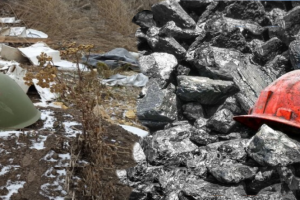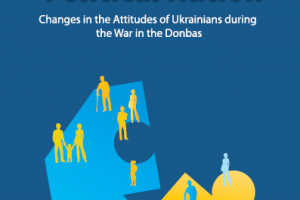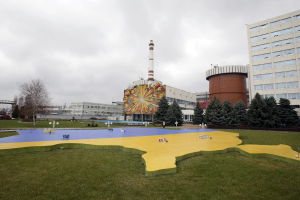Ending Complacency: Hybrid Defence and Strategic Autonomy for Europe after the War on Ukraine
Source: Les Rencontres Économiques d'Aix-en-Provence
Zeitgeist and Strategic Shock
Europe’s thirty-year “holiday from history” ended with the fall of the remnants of Mariupol and the mass of Russian armour rolling out of Belarus toward Kyiv in a thirty-mile convoy; exposing a continent whose armoured inventories and artillery parks had been halved while its alliance formally “grew” by fifteen members.
Compared with 1990, NATO today fields thirty-five percent fewer soldiers, sixty-five percent fewer tanks, and fifty-five per cent fewer artillery tubes – even after adding the fifteen new members. The lesson is stark: deterrence atrophies when capability withers. Meanwhile, US domestic turbulence – budget ceilings, “America-first” conflicting currents and election cycles – casts doubt on the permanence of extended deterrence, both conventional and nuclear.
Offensive-Defence Autonomy for Europe
Europe must therefore shift from a consumer of security to a producer of it, embracing an offensive-defence model that can fight with or without Washington. The Russian war on Ukraine illuminates both the price of unpreparedness and the possibilities of rapid adaptation.
Kyiv’s forces have bravely and impressively (re)demonstrated that disposable drones, resilient networks, incessant innovations, and dispersed territorial units can frustrate a numerically superior adversary, but they have done so at a huge cost. Moscow, simultaneously, has absorbed and replaced battlefield losses that would once have bankrupted and defeated the Kremlin (as in February 1989 and August 1996). The strategic takeaway is simple: high-intensity state-on-state war has returned to Europe, and its fiscal burn-rate dwarfs any peacetime savings achieved by past disarmament.
Rearmament must therefore proceed on twin tracks – mass and method.
First, Europe requires the hard mass of divisions, magazines and air-defence grids capable of deterring or defeating a renewed Russian thrust. Poland’s decision to order more main-battle tanks than what the entire Bundeswehr owns, Germany’s €100 billion Sondervermögen and the Baltic states’ accelerated artillery purchases all signal a continental shift, yet Europe still generates barely twenty percent of the heavy-equipment output it maintained in the late Cold War. Ammunition stockpiles remain perilously thin: the European Union’s promised million-round plan for Ukraine has slipped behind schedule and exposes the fragility of a munitions industry run for efficiency rather than endurance. Without urgent joint procurement and multi-year contract – backed by defence bonds or perhaps the European Investment Bank – Europe’s factories cannot keep pace with battlefield consumption.
Hybrid Defence
Second, method: Ukraine’s “hybrid defence” or conduct of war shows the critical importance of the “air-littoral” – the 0-to-30,000-foot envelope patrolled by quadcopters, loitering munitions and cheap cruise missiles – impacting tempo and casualty ratios. European air forces, built around exquisite fourth- and fifth-generation fighters, are numerically inadequate to police this layer against swarms. Every European brigade group should aim to field counter-UAS radars, electronic-warfare cells and short-range interceptors, while European artillery battery would be well served by integrating organic reconnaissance drones. Equally critical is cyber-electromagnetic resilience: Russian GPS spoofing in Eastern Ukraine (and Western Russia) repeatedly blinded unprotected systems, yet Ukrainian units routed their battle-management traffic through civilian constellations (including via Starlink) and maintained cohesion. The rest of Europe should take notes. Hardened command posts capable of fighting through days of electromagnetic denial should be the norm, not the exception.
Reserves and Resilience
Societal resilience is the next layer. Finland and Estonia, long criticised for clinging to conscription, have emerged as exemplars of “total [hybrid] defence.” Helsinki can mobilise 280,000 trained troops in ten days and its reserve may exceed one million by 2030. Estonia’s Kaitseliit (Defence League), representing almost three percent of the population, mans village armouries and rehearses local defence monthly. Israel’s October 2023 mobilisation – 360,000 reservists in seventy-two hours – shows that a small state can surge a wartime force larger than most professional European armies. These models show that selective, skills-based conscription coupled with graduate-level military education for civilians can generate both manpower and technological competence. Europe’s larger states, to include France, the United Kingdom, Germany, and Italy, should therefore revisit reserve structures mothballed in the 1990s, (re-)encourage defence studies in both civilian and military universities, (re-)introduce universal service pathways – military, civil-protection or cyber – under a “smart mobilisation” banner that ties defence to job creation and advanced training.
Strategic communication is the final enabling arm. Russian disinformation exploited European casualty aversion, peacetime dividends loss, and energy fears; Ukrainian messaging, conversely, fused frontline video, humour and moral framing to secure unprecedented Western support. A permanent European StratCom Centre – linking EU, NATO and national capabilities – should pre-empt misinforming and disinforming narratives, crowdsource myth-busting and integrate influence planning into every major exercise. Investment in hard power will fail if publics remain unconvinced of its necessity.
Lessons for Small(er) States: Dissuasion tous Azimuts
Small states must distil these lessons more sharply. Depth is gained through alliances, not geography; dispersal and manoeuvre still trump mass; reserves and territorial defence provide critical staying-power; and for military effectiveness, there is no escape from military education, smart mobilisation, combined arms, and multi-domain hybrid defence.
France remains the continent’s indispensable heavyweight. Alone among European NATO members it wields an independent nuclear deterrent force (a dyad, not an independent nuclear triad like Russia or a single, interdependent leg like the United Kingdom). De Gaulle’s “dissuasion tous azimuts” concept – deterrence in every direction – acquires renewed relevance when US reliability is being requestioned. Paris should lead an EU Nuclear Planning Cell that, while respecting national sovereignty, embeds French and British deterrents within a European strategic calculus, complicating any adversary’s risk assessment.
Adaptive Alliance: Deterrence after the War on Ukraine
Strategic renewal demands a re-imagined alliance architecture. NATO must remain the bedrock, but Europe should deepen its own structures: the Joint Expeditionary Force, the EU’s Rapid Deployment Capacity and wider coalitions such as the Ramstein Contact Group. Concurrently, democratic partners in East Asia and the Indo-Pacific – such as Japan, South Korea, Australia and New Zealand – should be invited into a “Democratic Security Community,” tightening coordination on supply chains, standardisation and emerging technology. Strategic autonomy thus becomes less a quest for separation than a commitment to shoulder primary responsibility at home while forging horizontal ties with kindred democracies abroad.
Europe is at last awakening to the cost of complacency, perhaps. However, deterrence by denial requires magazines filled, barracks crowded, ranges drilled, and networks hardened. Deterrence by punishment requires precise long-range fires and a credible European nuclear voice. Hybrid defence demands that a critical mass of the population serve as sensors or fighters. Europe is still not there.
The Russian war on Ukraine – where a smaller state has held off a larger, international power – shows the extraordinary dividends of resilience and innovation, but also the ruinous price of entering a war under-armed and unprepared. The window to transform Europe from security consumer to security producer is brief; another Mariupol cannot be the catalyst. Armed with strategic imagination, industrial will and democratic solidarity, Europe must seize this moment – before the next thirty-mile convoy rumbles west.
________________________________________
Omar Ashour is a Professor of Security & Military Studies at the Doha Institute for Graduate Studies (Qatar) and the Security & Strategy Institute of the University of Exeter (United Kingdon). He is a Non-Resident Senior Fellow at the Ilko Kucheriv Democratic Initiatives Foundation (Ukraine). He wrote How ISIS Fights (2021) and The De-Radicalization of Jihadists (2009), and edited Bullets to Ballots: Collective De-Radicalisation of Armed Movements (2021). His research spans security and military affairs in the Middle East, Eastern Europe and the Post-Soviet Republics. A frequent contributor to local and international media, Professor Ashour now focuses on comparative combat effectiveness, highlighted by his recent projects on how Putin’s armies fought like ISIS in Ukraine and on hybrid defence lessons from Ukraine, Israel, Syria, and Gaza.









